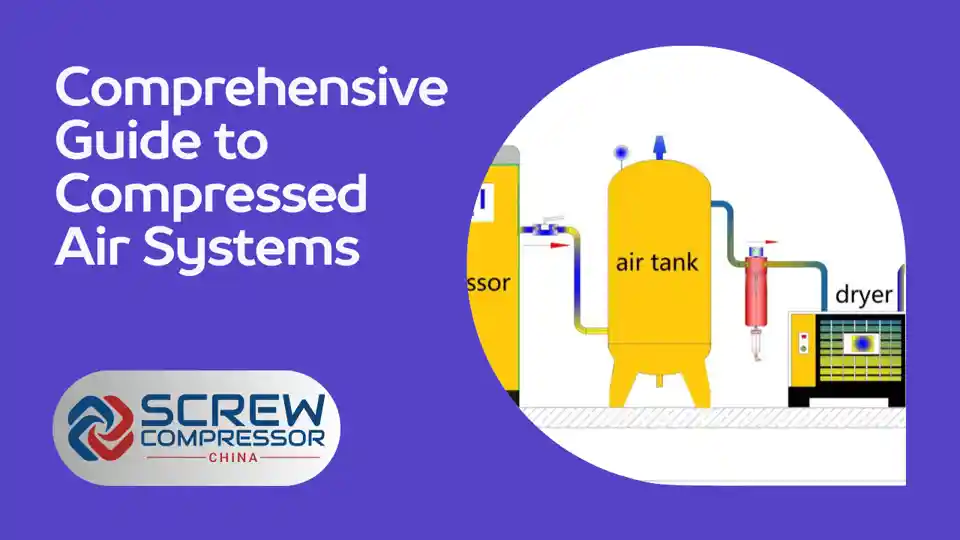Understanding Compressed Air Systems
Compressed air systems are integral to various industries, powering tools and machinery with precision and efficiency. These systems harness the power of air pressured above atmospheric levels, utilized in everything from automotive manufacturing to food processing.
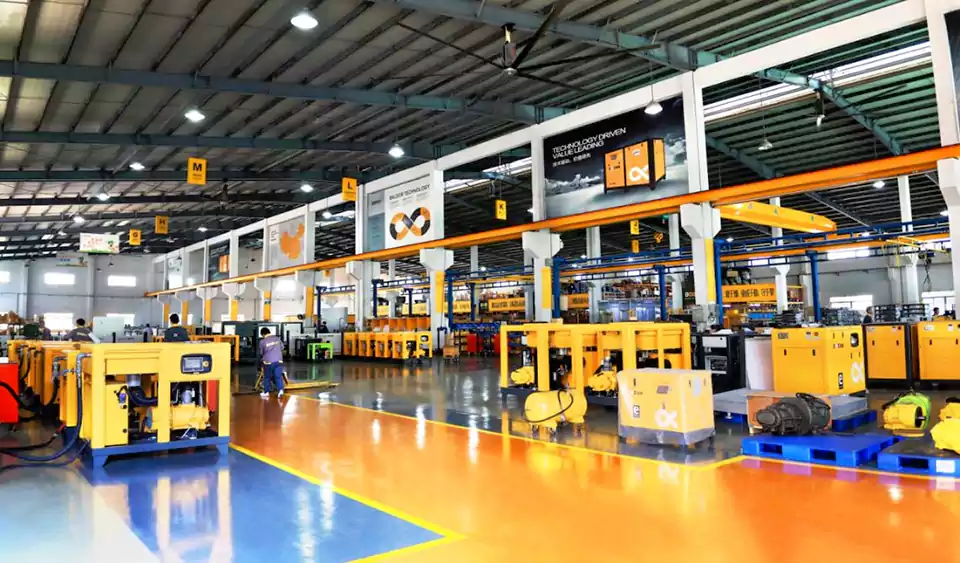
Compressed air systems consist of several key components that work together to generate, treat, store and distribute compressed air. The main components include the air compressor, which pressurizes the air, air dryers to remove moisture, storage tanks to hold the compressed air, and a network of pipes and valves to distribute the air to where it’s needed.
The quality and efficiency of compressed air can greatly influence operational success, making comprehensive system design crucial. Factors such as air pressure, flow rate, air quality, and energy efficiency must be carefully considered when designing or optimizing a compressed air system.
What is a Compressed Air System?
Compressed air is energy stored under pressure, created by air compressors that convert atmospheric air into a usable force. The air is compressed to a higher pressure, typically measured in pounds per square inch (psi) or bar, which allows it to be used to power pneumatic tools, machinery, and processes.
Compressed air is often referred to as the “fourth utility” in industrial settings, alongside electricity, water, and gas. It’s a versatile and safe power source that can be easily transported through pipes to various points of use.
The main components of a compressed air system include:
- Air Compressor: The heart of the system, which compresses the air to the desired pressure. There are several types of compressors, such as reciprocating, สกรูหมุน, and centrifugal compressors.
- Air Dryer: Removes moisture from the compressed air to prevent corrosion and improve air quality. Types include refrigerated dryers, desiccant dryers, and membrane dryers.
- Air Receiver Tank: Stores the compressed air and helps maintain a constant pressure in the system.
- Filters: Remove contaminants such as dust, oil, and moisture from the compressed air to protect downstream equipment and ensure air quality.
- Piping Network: Distributes the compressed air from the compressor to the points of use, such as pneumatic tools and machinery.
- Pressure Regulators and Controls: Maintain the desired pressure levels and control the flow of compressed air to various applications.
Learn more about the basics of compressed air systems-
Key Components of a Compressed Air System
The major components of a compressed air system work together to ensure a reliable supply of clean, dry air at the correct pressure for various applications. Understanding the role and importance of each component is crucial for designing, operating, and maintaining an efficient system.
1. Air Compressors
Air compressors are the primary component responsible for pressurizing the air. They come in various types, such as reciprocating (piston), rotary screw, and centrifugal compressors, each with its own advantages and suitable applications.
Reciprocating compressors are often used for smaller applications or where intermittent use is required. คอมเพรสเซอร์แบบสกรูโรตารี are more common in industrial settings due to their efficiency and ability to provide a continuous supply of compressed air. Centrifugal compressors are typically used in large-scale, high-volume applications.
2. Air Dryers
Moisture in compressed air can lead to corrosion, equipment damage, and product quality issues. Air dryers remove this moisture to ensure a supply of dry, quality air. The three main types of dryers are:
- Refrigerated Dryers: Cool the air to condense and remove moisture, suitable for general industrial applications.
- Desiccant Dryers: Use adsorbent materials to remove moisture, providing very dry air for sensitive applications.
- Membrane Dryers: Use semi-permeable membranes to separate moisture from the air, offering a compact and energy-efficient solution.
3. Air Receiver Tanks
Air receiver tanks store the compressed air and help maintain a stable pressure in the system. They act as a buffer, allowing the compressor to operate more efficiently by reducing the frequency of starts and stops. Receiver tanks also help to smooth out pulsations and provide a reserve of compressed air for peak demand periods.
4. Filters
Filters are essential for removing contaminants such as dust, oil, and moisture from the compressed air. They help protect downstream equipment, improve product quality, and ensure the air is suitable for breathing in certain applications. Filters are typically installed at various points in the system, such as after the compressor, before and after the dryer, and at points of use.
5. Piping Network
The piping network is responsible for distributing the compressed air from the compressor to the points of use. Proper sizing and layout of the piping network are crucial for minimizing pressure drop, ensuring adequate flow, and maintaining air quality. Factors to consider include pipe diameter, material, and layout, as well as the use of fittings, valves, and connectors.
6. Pressure Regulators and Controls
Pressure regulators and controls maintain the desired pressure levels and control the flow of compressed air to various applications. They help optimize system performance, reduce energy consumption, and protect equipment from damage due to excessive pressure.
Regulators are typically installed at points of use to provide the specific pressure required for each application. Control systems, such as pressure switches and variable speed drives, help maintain a stable system pressure and match compressor output to demand.
สกรูคอมเพรสเซอร์จีน, a leading air compressor manufacturer, provides a variety of equipment tailored to meet industrial needs, including compressors, dryers, filters, and control systems. Their expertise can help you design and optimize a compressed air system that meets your specific requirements.
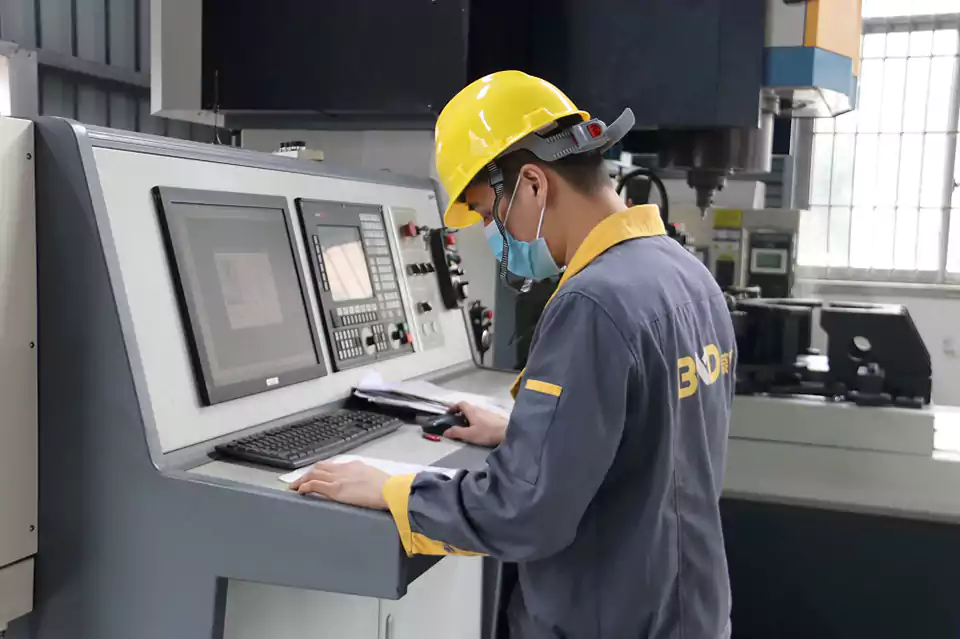
ประเภทของเครื่องอัดอากาศ
Understanding the different types of air compressors can help in selecting the right one for your needs. Each type has its own advantages, disadvantages, and suitable applications, depending on factors such as required pressure, flow rate, air quality, and energy efficiency.
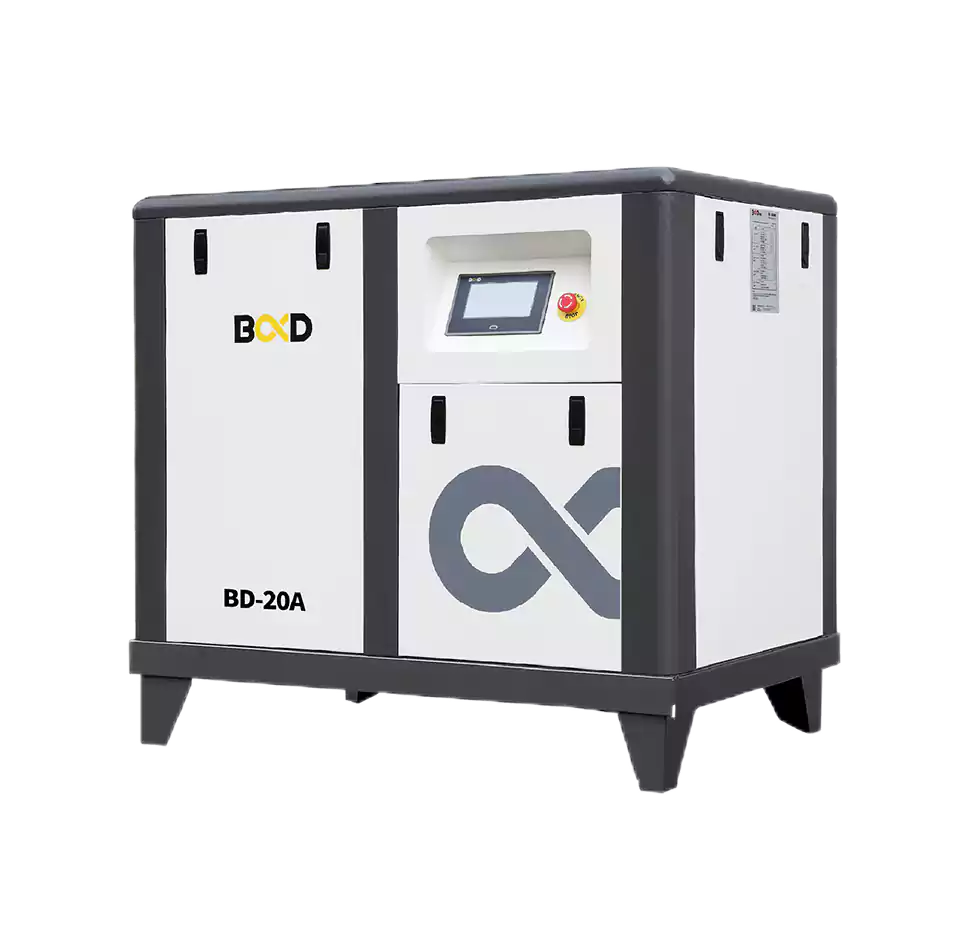
The two main categories of air compressors are positive displacement and dynamic compressors. Positive displacement compressors work by trapping a fixed volume of air and reducing its volume to increase the pressure. Dynamic compressors, on the other hand, use high-speed rotating impellers to impart velocity to the air, which is then converted to pressure.
คอมเพรสเซอร์แบบสกรูโรตารี
คอมเพรสเซอร์แบบสกรูโรตารี are the most common type used in industrial applications. They are positive displacement compressors that use two meshing helical screws to compress the air continuously. As the screws rotate, they trap air between them and the compressor housing, reducing the volume and increasing the pressure.
Advantages of rotary screw compressors include:
- High efficiency and energy savings potential
- Continuous air supply without pulsation
- Compact size and low noise levels
- Low maintenance requirements and long service life
Rotary screw compressors are suitable for a wide range of applications, from small workshops to large industrial plants. They are available in both oil-injected and oil-free versions, with oil-free compressors providing higher air quality for sensitive applications.
For detailed specifications and performance data, check out Screw Compressor China’s rotary screw compressors-
Piston Compressors
Piston compressors, also known as reciprocating compressors, are positive displacement compressors that use a piston driven by a crankshaft to compress the air. As the piston moves down, it draws air into the cylinder through an inlet valve. When the piston moves up, it compresses the air, which is then discharged through an outlet valve.
Piston compressors are available in single-stage and two-stage configurations, with two-stage compressors providing higher pressures and efficiency. They are typically used in smaller applications or where intermittent use is required, such as in workshops, garages, and home use.
Advantages of piston compressors include:
- Lower initial cost compared to other types
- Simple design and easy maintenance
- Suitable for intermittent use and lower air demand
- Can achieve high pressures in two-stage configurations
Disadvantages include higher noise levels, pulsating air delivery, and lower efficiency compared to rotary screw compressors.
คอมเพรสเซอร์แบบแรงเหวี่ยง
Centrifugal compressors are dynamic compressors that use a high-speed rotating impeller to impart velocity to the air, which is then converted to pressure in a diffuser. They are typically used in large-scale, high-volume applications, such as in power plants, chemical processing, and oil and gas industries.
Advantages of centrifugal compressors include:
- High flow rates and efficiency
- Continuous, pulsation-free air delivery
- ข้อกำหนดการบำรุงรักษาต่ำ
- Oil-free operation for high air quality
Disadvantages include higher initial costs, limited pressure ratios per stage, and reduced efficiency at part-load conditions.
When selecting an air compressor, consider factors such as your air demand, required pressure, air quality needs, energy efficiency, and maintenance requirements. Consult with a compressed air system expert, such as สกรูคอมเพรสเซอร์จีน, to help determine the best type and size of compressor for your specific application.
Optimizing Compressed Air Systems
Proper system design involves more than just selecting the right compressor. It requires a holistic approach to ensure all components are harmonized to deliver air efficiently and reliably. Optimizing your compressed air system can lead to significant energy savings, improved performance, and reduced maintenance costs.
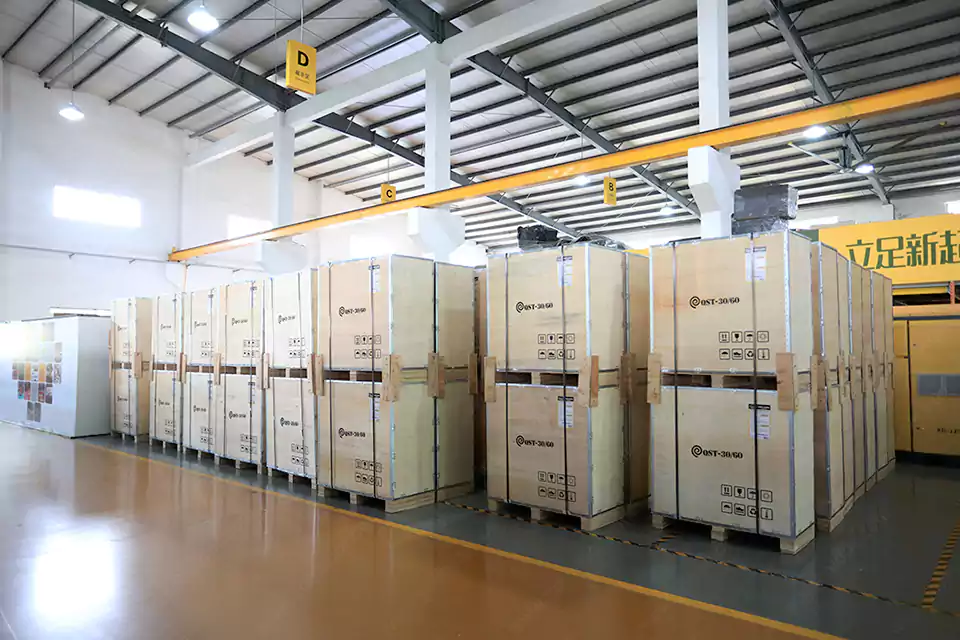
Key areas to focus on when optimizing your compressed air system include:
Air Quality and Filtration
Maintaining the quality of your compressed air is essential for protecting downstream equipment, ensuring product quality, and providing a safe working environment. Contaminants such as dust, oil, and moisture can lead to equipment damage, reduced efficiency, and potential health hazards.
To ensure high air quality, a comprehensive filtration system should be installed at various points in the compressed air system. This typically includes:
- Intake filters to prevent dust and debris from entering the compressor
- Coalescing filters to remove oil and water aerosols
- Particulate filters to remove solid particles
- Adsorption filters to remove oil vapors and odors
High-quality air filters are crucial for removing contaminants and maintaining the efficiency of your compressed air system. Regular filter maintenance and replacement are also essential to ensure optimal performance.
ประสิทธิภาพการใช้พลังงาน
Compressed air systems are significant energy consumers in industrial facilities, often accounting for 10-30% of total electricity consumption. Optimizing the energy efficiency of your compressed air system can lead to substantial cost savings and reduce your environmental impact.
Some key strategies for improving energy efficiency include:
- Matching supply to demand: Ensure that your compressor capacity matches your air demand to avoid wasted energy from over-production. This can be achieved through proper system sizing, using multiple compressors, or implementing variable speed drives.
- Reducing pressure: Every 2 psi increase in pressure requires approximately 1% more energy. Operate your system at the lowest pressure necessary to meet your requirements, and consider using pressure regulators at points of use.
- Minimizing leaks: Air leaks can account for 20-30% of compressed air energy consumption. Implement a regular leak detection and repair program to minimize losses.
- Heat recovery: Compressors generate significant amounts of heat, which can be captured and used for space heating, process heating, or water heating, reducing overall energy consumption.
- Proper maintenance: Regular maintenance, such as cleaning coolers, replacing filters, and lubricating moving parts, helps maintain compressor efficiency and prevents energy waste.
Incorporating technologies such as variable speed drives can significantly reduce energy consumption by aligning compressor output with demand. Learn how Screw Compressor China’s solutions enhance energy efficiency.
System Maintenance
Regular maintenance is essential to ensure the long-term reliability, efficiency, and safety of your compressed air system. A well-maintained system will experience fewer breakdowns, consume less energy, and provide higher quality air.
Key elements of a comprehensive maintenance program include:
- Routine inspections: Regularly inspect your compressor, dryers, filters, and other components for signs of wear, leaks, or damage. This can help identify potential issues before they lead to failures or efficiency losses.
- Filter replacements: Replace air filters regularly to maintain air quality and prevent contaminants from entering the system. The frequency of filter replacements will depend on your specific operating conditions and air quality requirements.
- Lubrication: Ensure that your compressor and other moving parts are properly lubricated to reduce wear and maintain efficiency. Use the recommended lubricants and follow the manufacturer’s guidelines for lubrication intervals.
- Cooling system maintenance: Clean and maintain your compressor’s cooling system, including coolers, fans, and water treatment systems (if applicable). Proper cooling is essential for preventing overheating and maintaining compressor efficiency.
- Leak detection and repair: Implement a regular leak detection and repair program to minimize air losses and energy waste. Use ultrasonic leak detectors to identify leaks, and prioritize repairs based on leak size and location.
- Record keeping: Maintain accurate records of maintenance activities, repairs, and performance data. This can help you track system performance over time, identify trends, and make informed decisions about system upgrades or replacements.
สกรูคอมเพรสเซอร์จีน offers comprehensive maintenance services, ensuring your system operates at peak performance. Their experienced technicians can help you develop and implement a maintenance program tailored to your specific needs.
FAQs on Compressed Air Systems
Q: What is the best type of compressor for a large industrial application?
A: For large-scale industrial use, rotary screw compressors are recommended due to their durability and ability to provide a steady air supply. They offer high efficiency, continuous air delivery, and low maintenance requirements, making them well-suited for demanding industrial applications.
Centrifugal compressors are another option for very large, high-volume applications, such as those found in power plants, chemical processing, and oil and gas industries. They provide high flow rates, continuous operation, and oil-free air delivery.
When selecting a compressor for a large industrial application, consider factors such as your specific air demand, required pressure, air quality needs, energy efficiency, and maintenance requirements. It’s essential to work with a compressed air system expert, such as สกรูคอมเพรสเซอร์จีน, to properly size and design your system for optimal performance and efficiency.
Q: How often should air filters be replaced?
ตอบ: The frequency of air filter replacements depends on several factors, including the type of filter, the quality of the intake air, the compressor operating hours, and the specific application requirements. As a general guideline:
- Intake filters should be inspected monthly and replaced when they become clogged or show signs of damage. In dusty or polluted environments, more frequent replacements may be necessary.
- Coalescing filters, which remove oil and water aerosols, should be replaced every 2,000 to 4,000 hours of operation, or as indicated by pressure differential readings.
- Particulate filters, which remove solid particles, should be replaced every 4,000 to 8,000 hours of operation, or as indicated by pressure differential readings.
- Adsorption filters, which remove oil vapors and odors, should be replaced every 6,000 to 12,000 hours of operation, or as indicated by the manufacturer’s guidelines.
It’s important to consult your filter manufacturer’s recommendations and monitor your system’s performance to determine the optimal replacement intervals for your specific application. Regular filter inspections and replacements are crucial for maintaining air quality, protecting downstream equipment, and ensuring the efficiency of your compressed air system.
Q: What are the benefits of using an air dryer in my compressed air system?
A: Using an air dryer in your compressed air system offers several key benefits:
- Moisture removal: Compressed air naturally contains moisture, which can condense as the air cools downstream of the compressor. An air dryer removes this moisture, preventing it from entering your piping and equipment. This can lead to corrosion, rust, and reduced efficiency.
- คุณภาพอากาศดีขึ้น: Moisture in compressed air can also introduce contaminants into the system, affecting the quality of the end product. Air dryers help maintain a consistent level of air purity, which is crucial for sensitive applications like food processing, pharmaceuticals, and electronics manufacturing.
- Reduced maintenance costs: By removing moisture, air dryers help prevent corrosion and rust in the compressed air system. This reduces the need for frequent maintenance and repairs, ultimately saving money in the long run.
- Increased equipment lifespan: Moisture-free compressed air helps protect downstream equipment from damage caused by water, rust, and contaminants. This can significantly extend the life of pneumatic tools, machinery, and other equipment that relies on compressed air.
- Enhanced energy efficiency: Dry compressed air reduces the formation of condensation in the system, which can cause pressure drops and affect the efficiency of the compressor. By maintaining a consistent pressure and reducing the load on the compressor, air dryers contribute to overall energy savings.
When selecting an air dryer for your compressed air system, consider factors such as the required dew point, air flow rate, and the specific needs of your application. Consult with a compressed air expert to determine the best type of dryer for your system, such as refrigerated, desiccant, or membrane dryers.
บทสรุป
A well-designed and maintained compressed air system is essential for ensuring reliable, efficient, and cost-effective operation in industrial settings. By understanding the key components, selecting the right type of compressor, and implementing best practices for optimization and maintenance, you can maximize the performance of your compressed air system while minimizing energy consumption and downtime.
Remember to regularly assess your compressed air needs, monitor system performance, and invest in high-quality components and regular maintenance to keep your system running at peak efficiency. By partnering with experienced compressed air professionals, such as สกรูคอมเพรสเซอร์จีน, you can access the expertise and solutions needed to optimize your system and achieve long-term success.
คำอธิบายเมตา: Learn the essentials of compressed air systems, including types of compressors, key components, and best practices for optimization and maintenance. Discover how Screw Compressor China’s high-performance solutions can help you achieve reliable, efficient, and cost-effective compressed air delivery.
